Perhaps the best known of all aeoniums in cultivation today is the dramatic Aeonium ‘Zwartkop’. Translated from Afrikaans, this name means black head, which is an apt title for certainly the darkest aeonium I’ve ever grown. Its deeply pigmented leaves are, in truth, a very dark red, but are near black, especially following months of summer sunshine.
Its mini shrub-like form of up to 1m sees it produce numerous side branches, which can be selectively removed to enhance its shape. It is best grown in a pot so it can be stored frost-free over winter, where I’ve found its colour fades somewhat, only to return again when the sunshine does. Like many of the arboreal aeoniums, this plant gets top heavy, so it’s essential to have an even weightier pot to avoid it toppling over under its own heft. I’ve even used large stones in the top of the pot to keep plants stable.
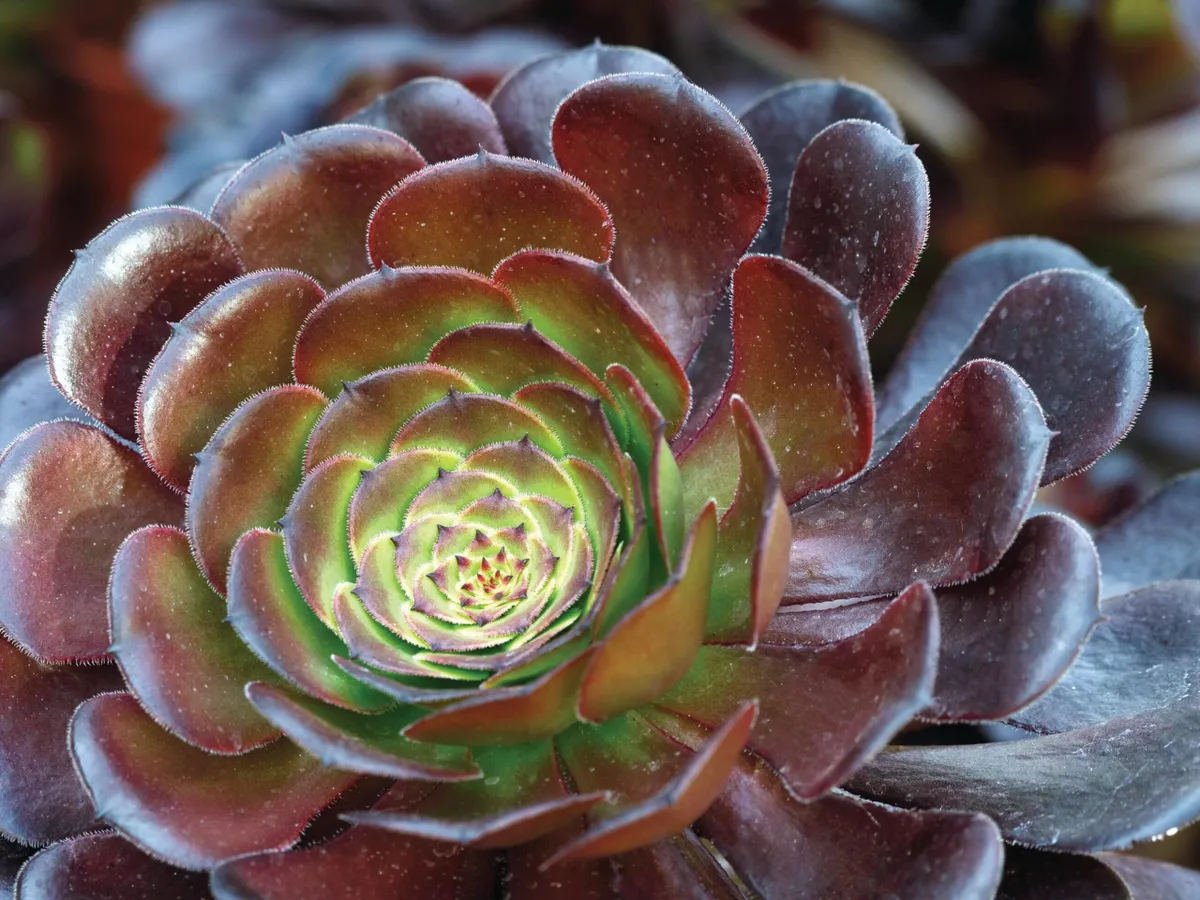
More on
Here's our guide on propagating and caring for aeonium plus the best cultivars to grow.
Jump to
How to propagate aeonium
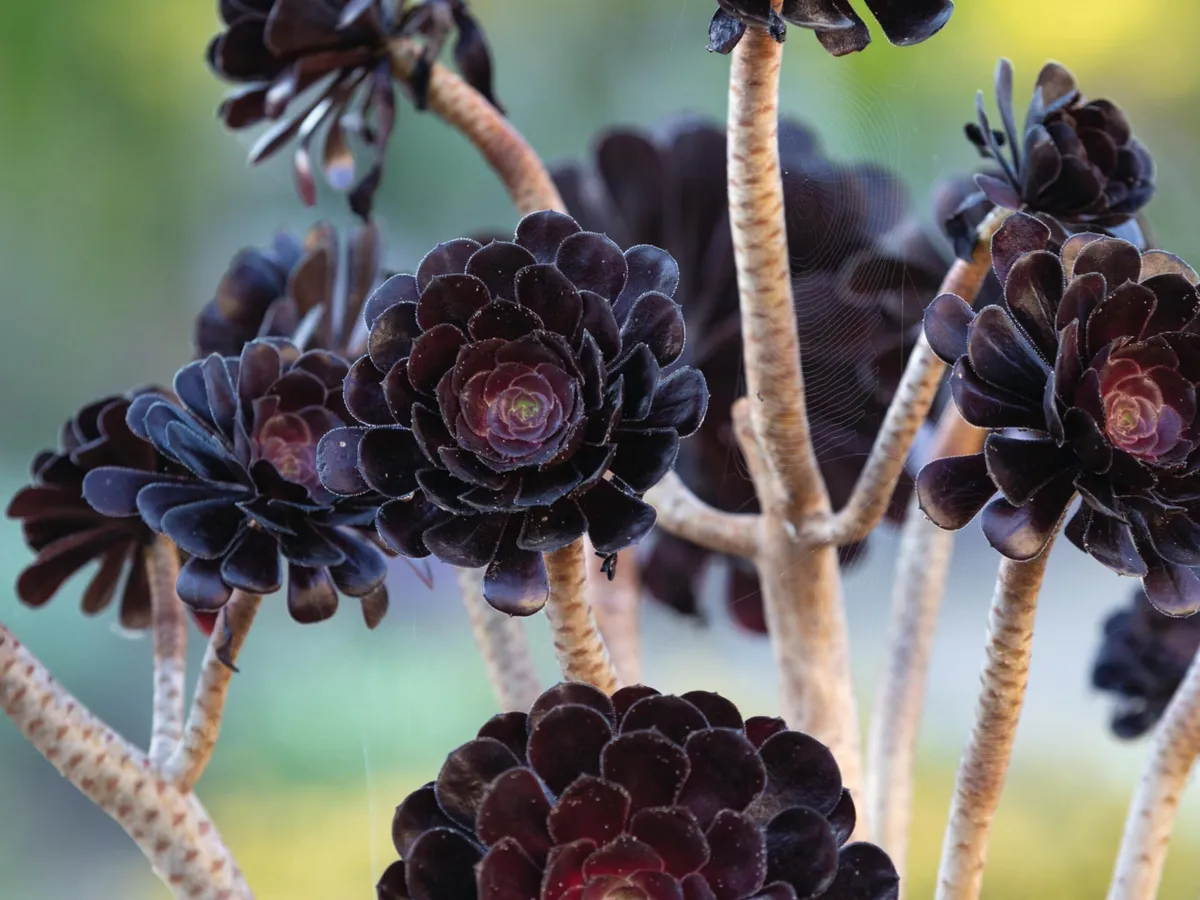
The easiest way to propagate is via stem cuttings. Simply cut a stem and rosette of 10-15cm and leave it in a dry place for around two weeks. Once the wound has calloused over, the cuttings can be potted into a 50/50 mix of gravel and compost, away from direct light, and allowed to root through. Leaf cuttings are also an option but work better with some species, such as A. tabuliforme. Simply twist off a leaf and lay on a bed of dampened sand, where tentative roots will appear within a few weeks.
How to care for aeonium
Aeoniums are generally easy plants to care for, provided you pot them in a well-drained soil and allow them to dry out between waterings.
Aeoniums are winter-growing plants that are triggered into growth once the winter solstice has passed, and become all but dormant during summer. During hot periods, their rosettes close up to help conserve water. In winter in the UK, they will need frost-free protection (ideally in a greenhouse) with good air circulation, but in summer they are happiest outside.
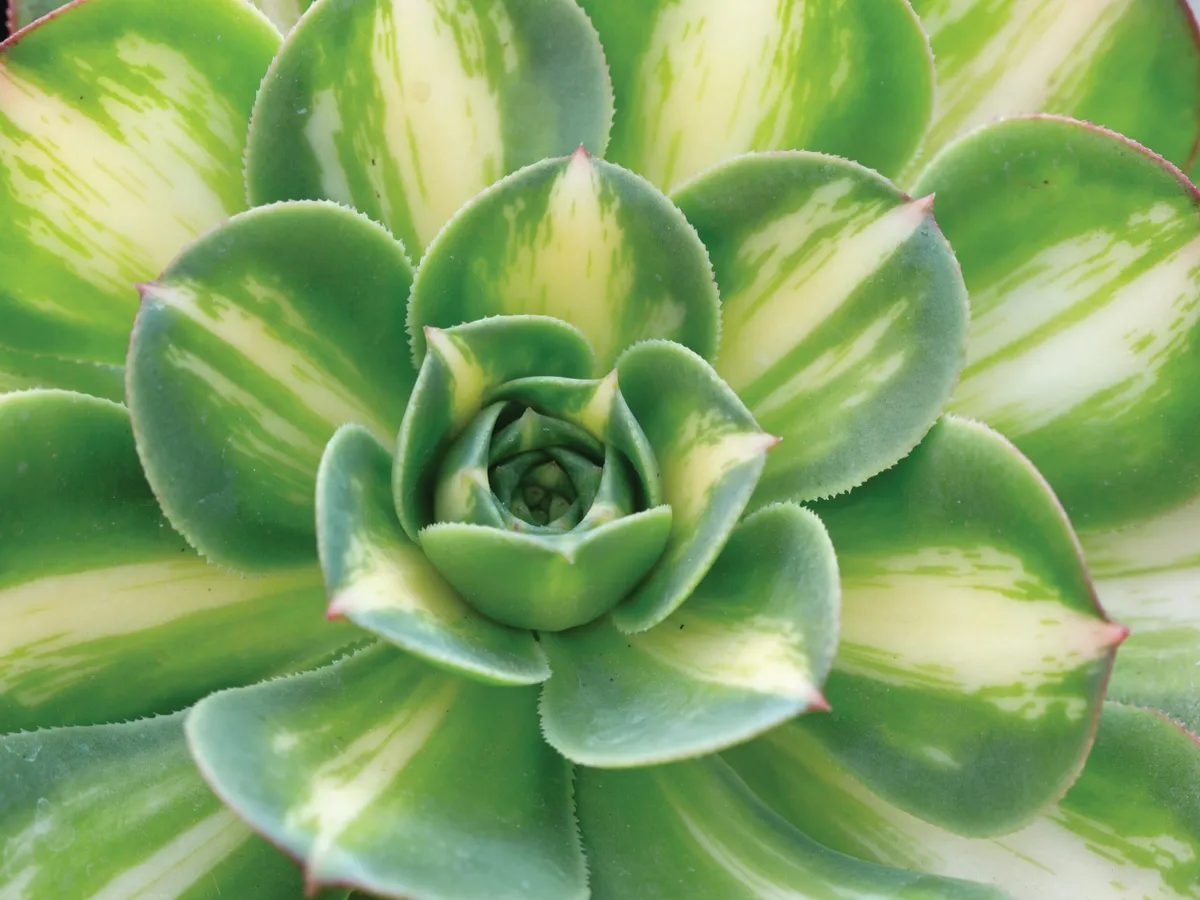
How to grow aeonium
For best results, grow in a terracotta pot in a free-draining, 50/50 mix of horticultural grit and general peat-free compost. This is best replaced via repotting every two to three years. Don’t be tempted to coat the top of the compost in gravel, as this can prevent you from assessing its relative dryness.

How to water aeonium
Don’t water aeoniums while dormant in summer. They really don’t like water when they are in their summer dormant phase and may require protection from rainstorms to prevent them rotting. At Chelsea Physic Garden, we used plastic sheets to protect plants in this situation.
Water aeoniums only when you bring them back indoors (or move back into the greenhouse), in October, by plunging the pot into water until the soil is completely saturated. Once this initial soak has dried out, repeat the soak and dry out process until the end of February. From March until the end of April, you can feed plants with a half-strength, broad-spectrum liquid feed, such as Miracle-Gro, every two weeks. This will boost both flowering and growth.
Here's more on how to water succulents
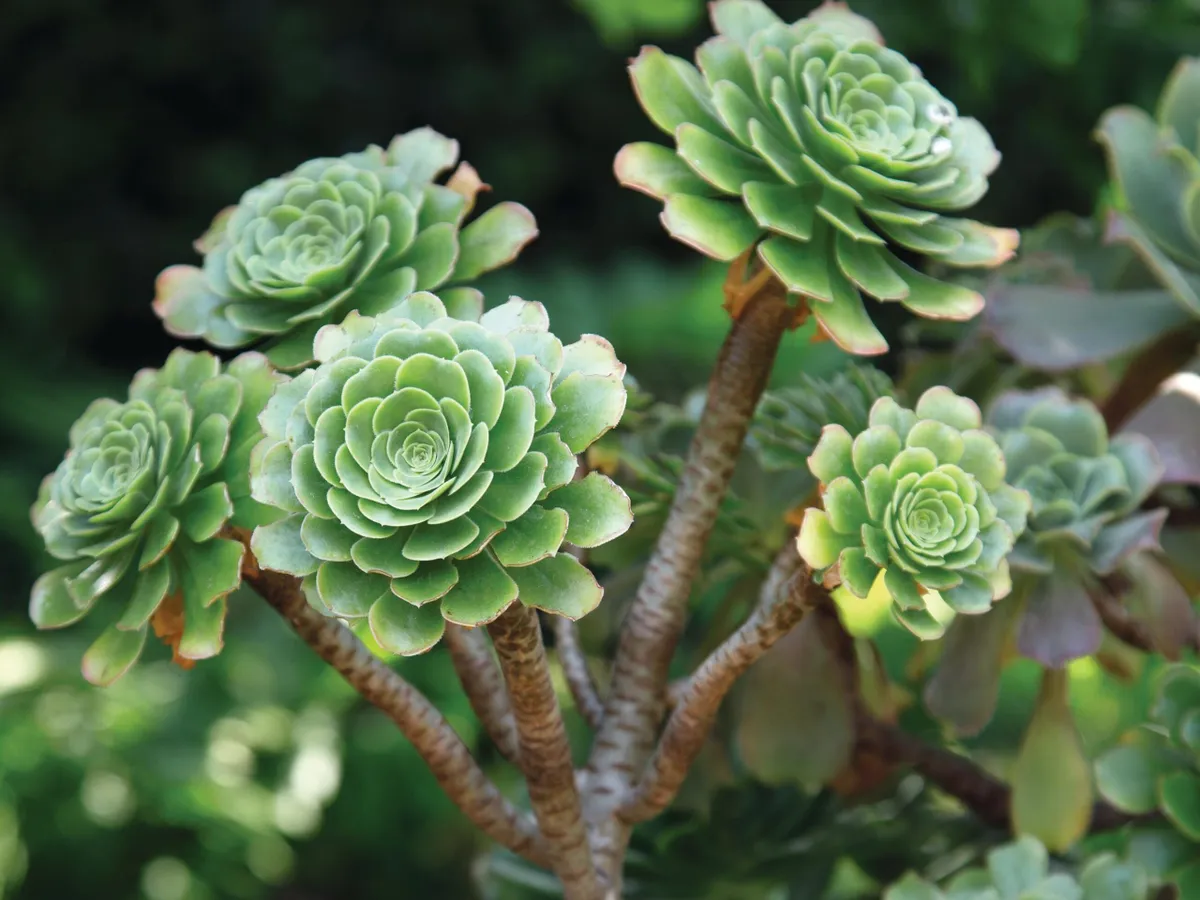
Growing aeonium from seed
Aeoniums can also be grown from seed in spring. These are best sown on a thin layer of grit or alpine gravel on top of seed compost, then sprinkled gently with water, before covering the seed tray
with a clear lid until they germinate.
Aeonium pests and diseases
Pest and disease problems are not common with aeoniums but occur most frequently under glass. Look out for mealy bug and tortrix moth caterpillar, both of which can be squished with cotton buds.
The best aeonium to grow
Aeonium arboreum

Commonly know as the tree aeonium, this stately plant is among the largest in the genus. It can be found growing wild across five of the Canary Islands, where it develops a stocky, domed, shrubby form. Height: 2m. RHS H1C, USDA 9b-11.
Aeonium ‘Zwartkop’
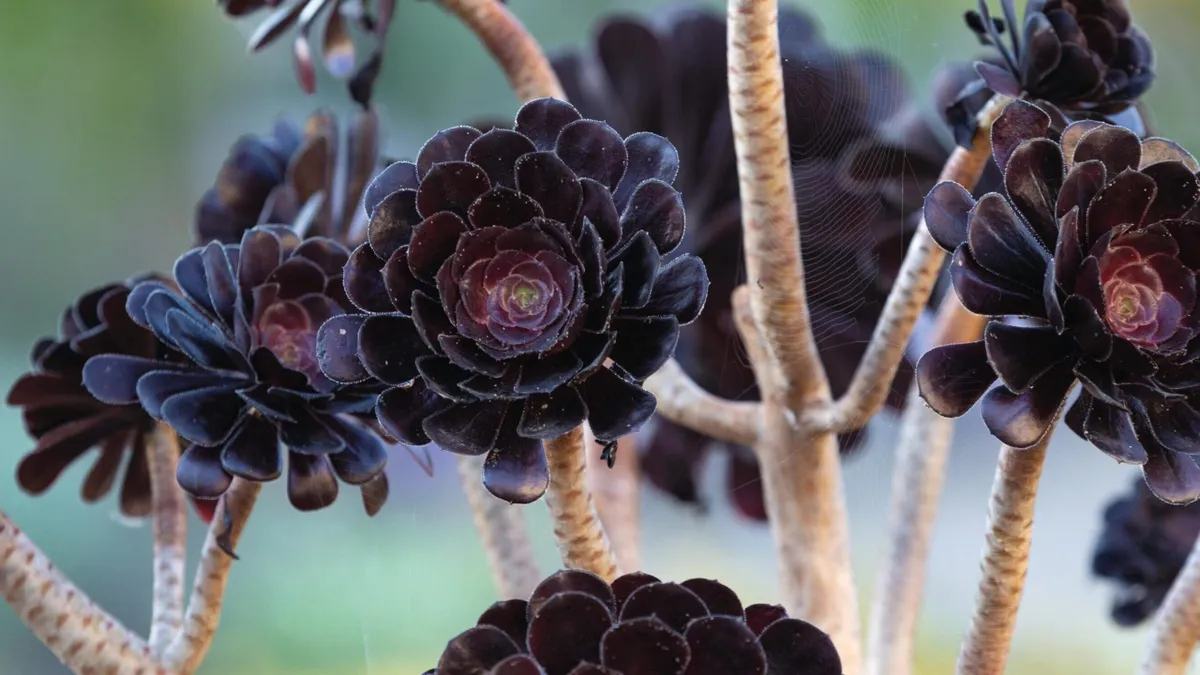
Also known as Aeonium arboreum ‘Arnold Schwarzkopff’, this is the most popular aeonium in the UK. The Huntington Botanical Gardens in California has crossed it with Aeonium canariense to create many colourful, modern cultivars. 1m x 50cm. AGM. RHS H1C.
Aeonium ‘Superbang’

An Asian cultivar created (alarmingly) by radiating the plant. It has a strong arboreal form and as
light levels intensify in spring, the outer variegation becomes a brighter red and the lime-green centre turns to a deep, dark red. 60cm.
Aeonium ‘Bronze Teacup’

Listed as threatened, this elegant, dwarf arboreal plant was bred in the USA. Its succulent bronze leaves constantly alter in tone, becoming dark to almost black through the season. Its stubby, tightly packed leaves create a dense, attractive rosette. 40cm.
Aeonium ‘Mardi Gras’

Bred by Renee O’Connell at the Huntington Botanical Gardens in California. This has variegated heads of striped purple, red, yellow and green leaves that get deeper in bright sunlight. Of unknown parentage but has a strong arboreal form. 50cm.
Aeonium ‘Medusa’
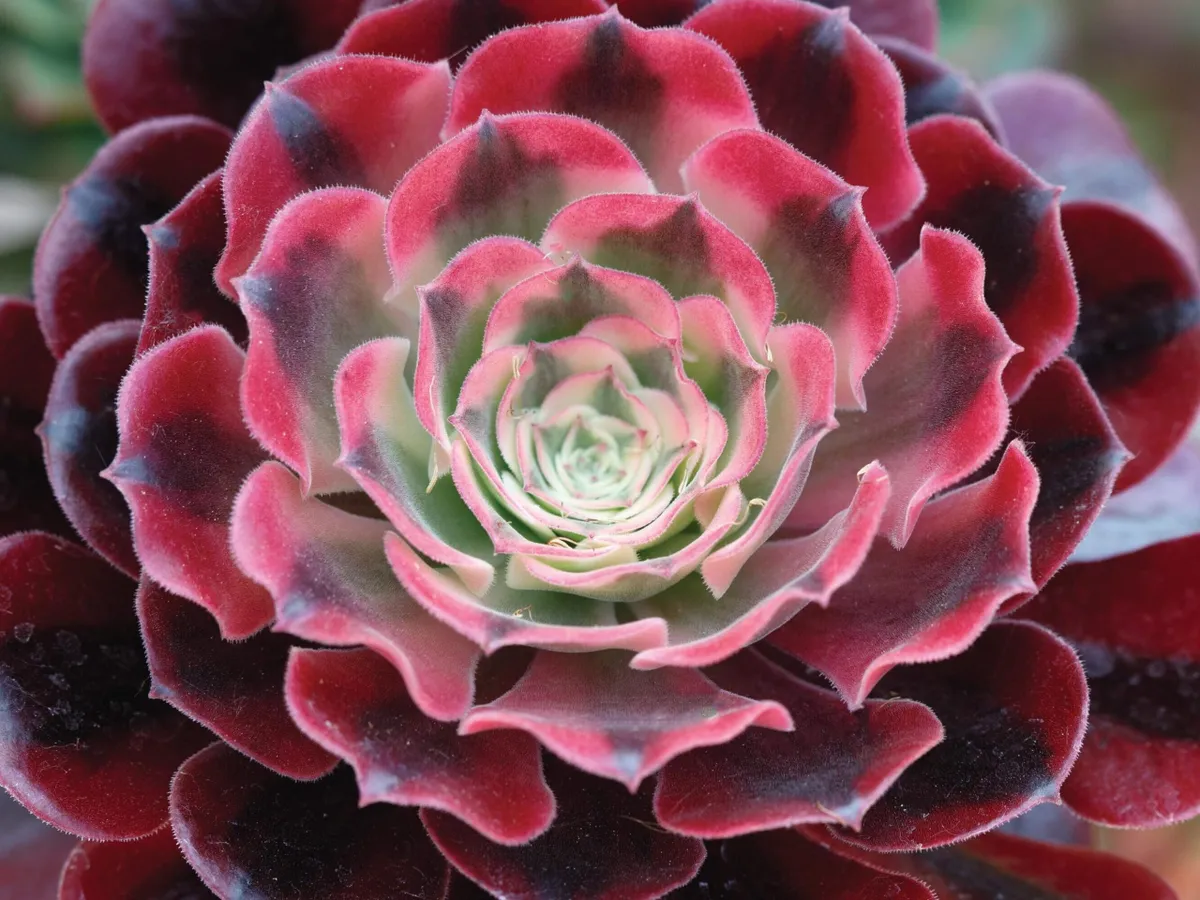
This Asian-bred, stocky arboreal plant has been around for more than a decade and appears stable in both cultivation and propagation. Its beautiful variegated heads provide a dramatic contrast to plain leaves. 55cm.
Aeonium ‘Torchbearer’

A clump-forming cultivar that has a good dome shape and is ideal for growing in a container. It is thought to be the progeny of the Gran Canaria species Aeonium simsii, and its fulsome rosettes have a similar quality to those of a houseleek. 35cm.
Aeonium leucoblepharum

A species that originates in Yemen and east Africa, this is one of the rarer aeoniums available in the UK. It’s an arboreal type with unusually pointed leaves that remain a solid green throughout the year. 70cm.
Aeonium ‘Starburst’

Sometimes listed as Aeonium ‘Lemon-Lime’, this plant is possibly the oldest cultivar as it’s been grown since the 1600s. It has a branching form and strong summer dormancy, so won’t tolerate rain. 30cm.
Aeonium ‘Marnier-Lapostolle’
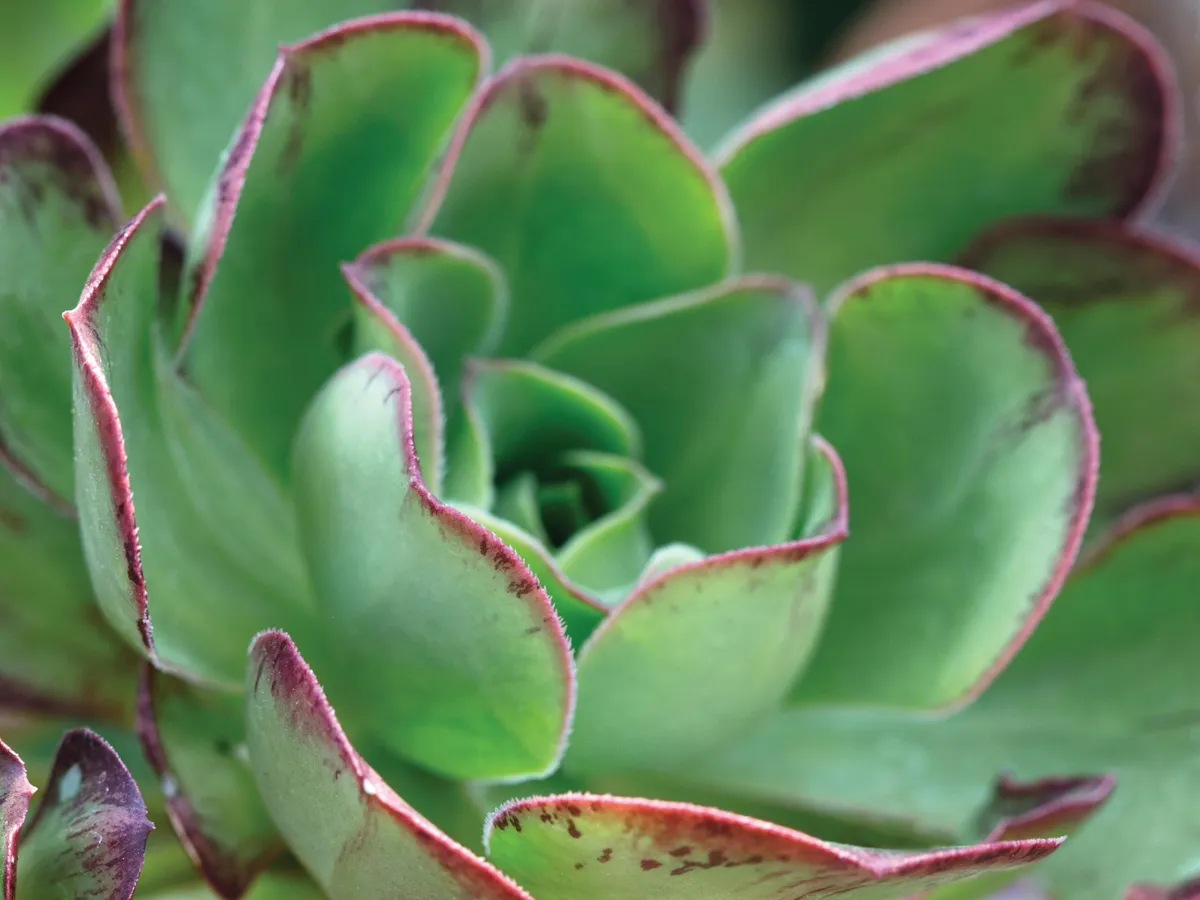
Thought to be a naturally occurring garden hybrid, this multi-tonal green and purple aeonium was discovered in France. It’s clump forming, naturally producing lots of side shoots. 40cm.
Aeonium ‘Kiwi’
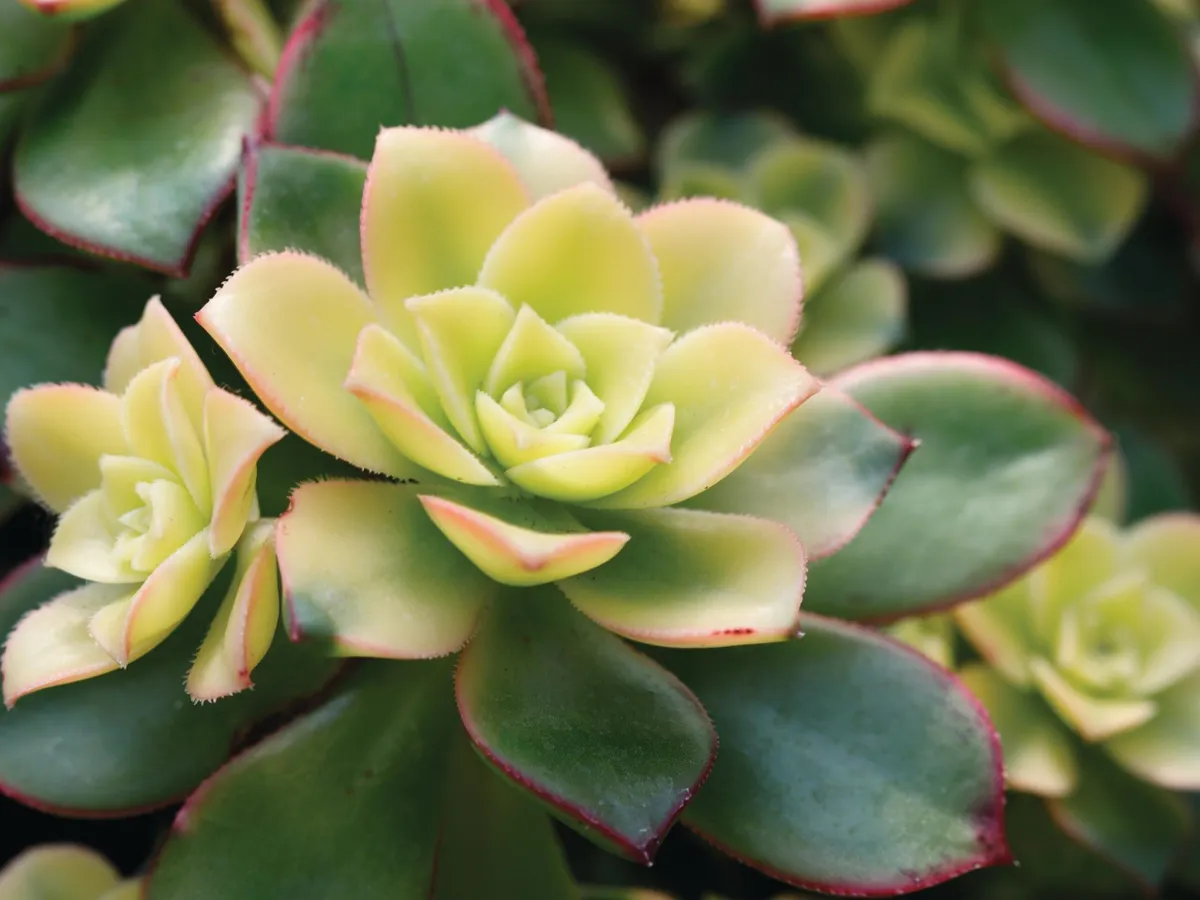
Listed under myriad names, this shrubby cultivar is likely a variant of Aeonium haworthii. It provides
a great contrast to other plants thanks to its lime and yellow tones, which vary during the season. 60cm. AGM. RHS H1C.
Aeonium arboreum ‘Atropurpureum’
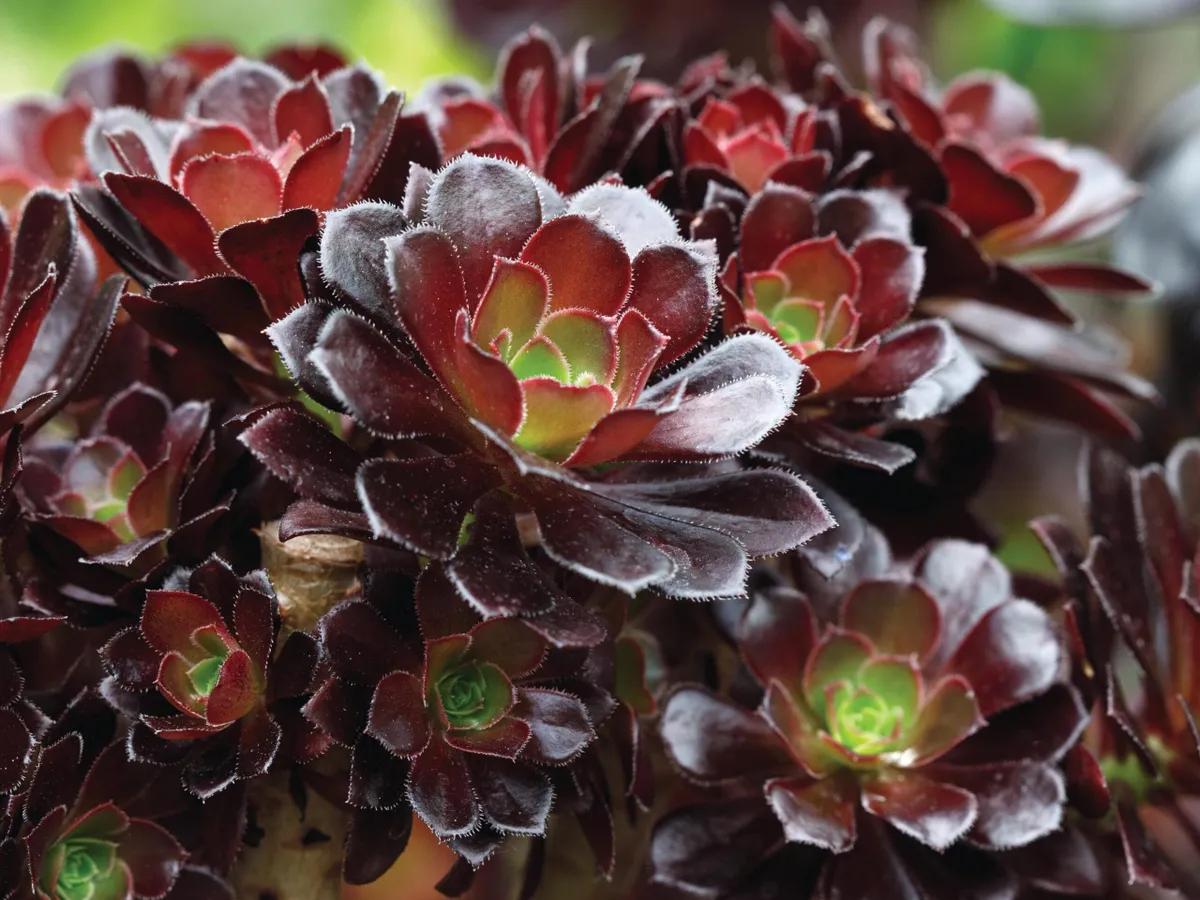
This arboreal aeonium is easy to grow and develops its best foliage colour in a full sun position. When mature it also produces a bright-yellow flowerhead. It can be pruned to enhance its form. New rosettes will form at the cuts. 1.5m.
Aeonium nobile

Hailing from La Palma in the Canary Islands, this is a stalkless, monocarpic and thick-leaved species, and is the only aeonium with red flowers. Grow it in a rock garden to replicate the lava flows in which it naturally thrives. 40cm.
Where to buy aeonium
• Corseside Nursery Corseside Farm, Angle Road, Pembroke, Pembrokeshire SA71 5AA. Tel 07817 399872, corsesidenursery.com
• Piccolo Plants Nursery Berry Hill, Branscombe, Devon EX12 3BD. Tel 07722 486750, piccoloplantsnursery.co.uk
• Surreal Succulents Tremenheere Nursery, Tremenheere Sculpture Gardens, Gulval, Cornwall TR20 8YL. Tel 07476 349545, surrealsucculents.co.uk
Where to see aeonium
• Mellie Lewis Hill View, 2 High Street, Clun, Shropshire SY7 8JB. By appointment only, and only during summer. melanie.lane@virgin.net
• RHS Garden Wisley Woking, Surrey GU23 6QB. Tel 01483 224234, rhs.org.uk/gardens/wisley
Guide to aeonium
Aeonium is a genus of around 40 species in the Crassulaceae family. Aeoniums are rosette-forming, sometimes branched succulents with starry flowers held on often large, dramatic inflorescences.
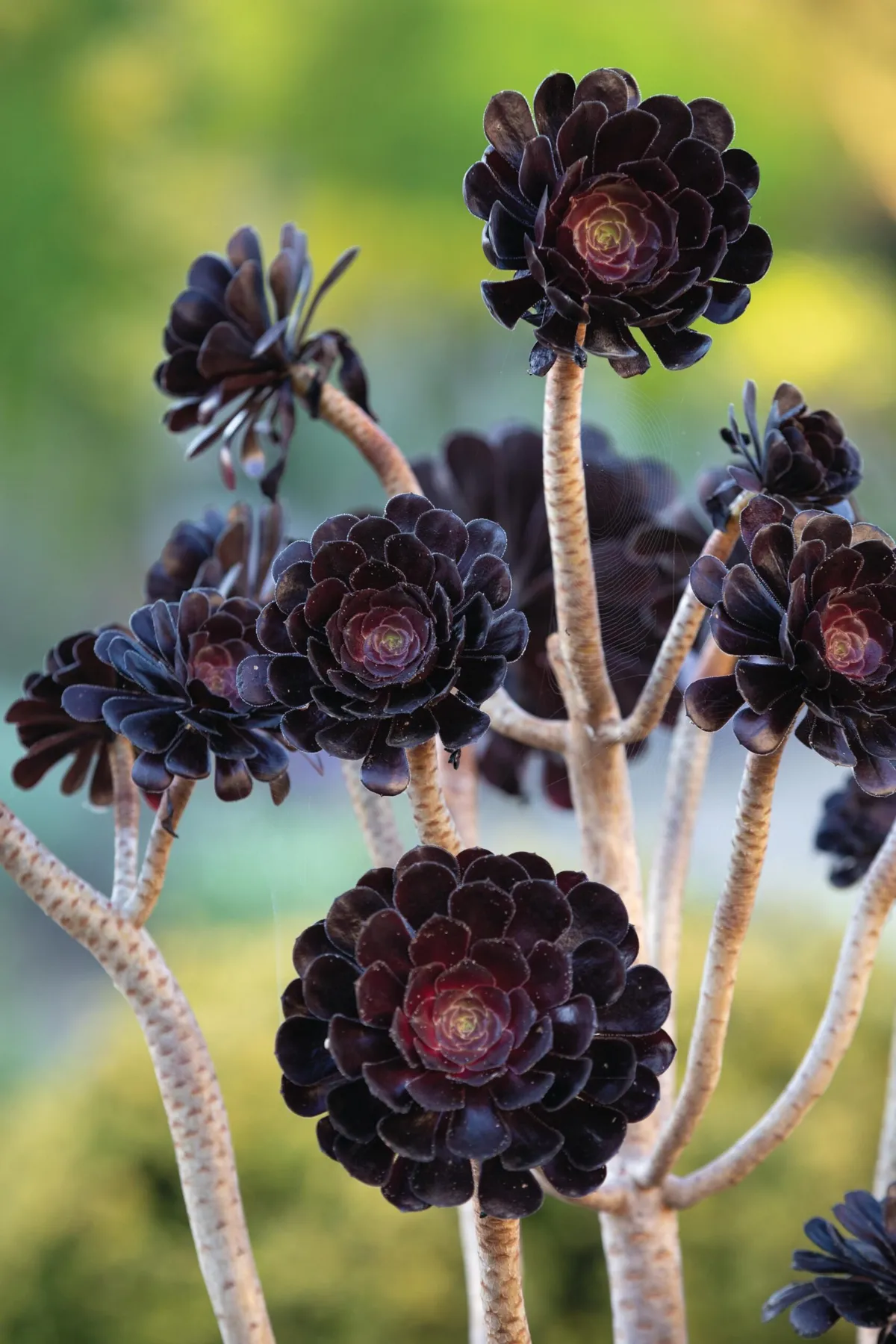
These are naturally distributed in Atlantic islands including Madeira, Gran Canaria and Tenerife, and the arid environs of Morocco, Yemen and eastern Africa. Season Winter-growing, summer-dormant plants that usually flower in spring, but inflorescences can appear at virtually any time depending on condition or indoor/outdoor cultivation.
Depending on the species, height varies from as little as 1cm up to more than 1m, while the width of both rosettes and overall form varies significantly depending on environment.